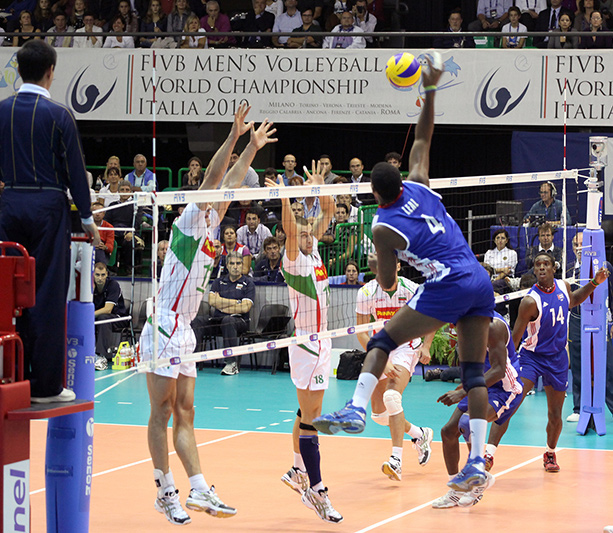
Shutterstock.com 64514659
Two studies presented at the IOC World Conference on Prevention of Injury and Illness in Sport, held in Monaco in March, shed light on the complex ways in which aspects of landing contribute to risk of ankle sprain in volleyball and basketball—both sports in which ankle sprains often occur when one player lands on another’s foot.
Because ankle sprains occur so quickly that patient recall about the mechanism of injury is often unreliable, researchers from Aspetar Orthopedic and Sports Medicine Hospital in Doha, Qatar, analyzed video footage of ankle sprains sustained by 24 elite male volleyball players for a more detailed analysis by five experts.
In most cases, attacking players rather than blockers were to blame for injuries—including back row attackers landing on their front-row teammates, a situation that had not been previously reported in relation to ankle sprains, according to Christopher Skazalski, PT, DPT, an Aspetar researcher who presented the findings in Monaco.
In addition, video analysis revealed that inversion ankle sprains during landing did not typically occur with the ankle in plantar flexion—a finding that runs counter to popular belief among many ankle sprain experts.
“Typically ankle plantar flexion at initial contact involves relatively neutral inversion-eversion. As the ankle moves toward dorsiflexion, it rapidly everts. But the inversion actually does not occur during plantar flexion,” Skazalski said.
Researchers from the Polytechnic Institute of Coimbra in Portugal analyzed landing mechanics in basketball players, who jumped onto an unstable surface to simulate landing on another player’s foot. Players with a history of ankle sprain landed in greater knee extension at initial contact than those with no history of ankle sprain; this difference was particularly pronounced in women.
“Not only for prevention but also during rehabilitation, we should take into account knee position as well as ankle position during landing,” said Maria Antonio Castro, PhD, a researcher with the institute, who presented her group’s findings in Monaco.
Sources:
Skazalski C, Kruczynski J, Bahr MA, et al. Landing related ankle injuries do not occur in plantar flexion as once thought: A video analysis of ankle injuries in world-class volleyball from the FIVB injury surveillance system. Br J Sports Med 2017;51(4):389.
Castro MA, Fernandes O, Janeira MA, VencesBrito A. How important is knee position on landing for ankle sprain? Br J Sports Med 2017;51(4):303.









